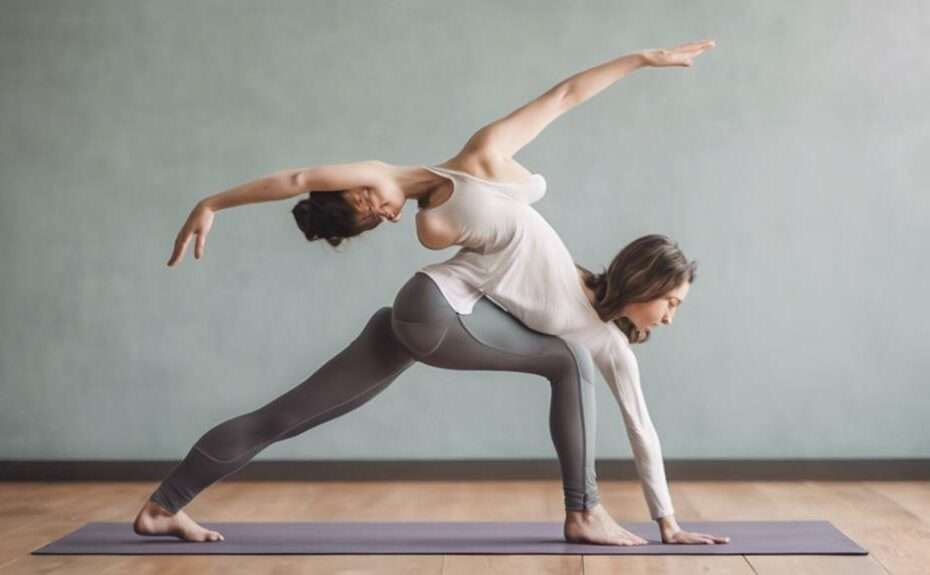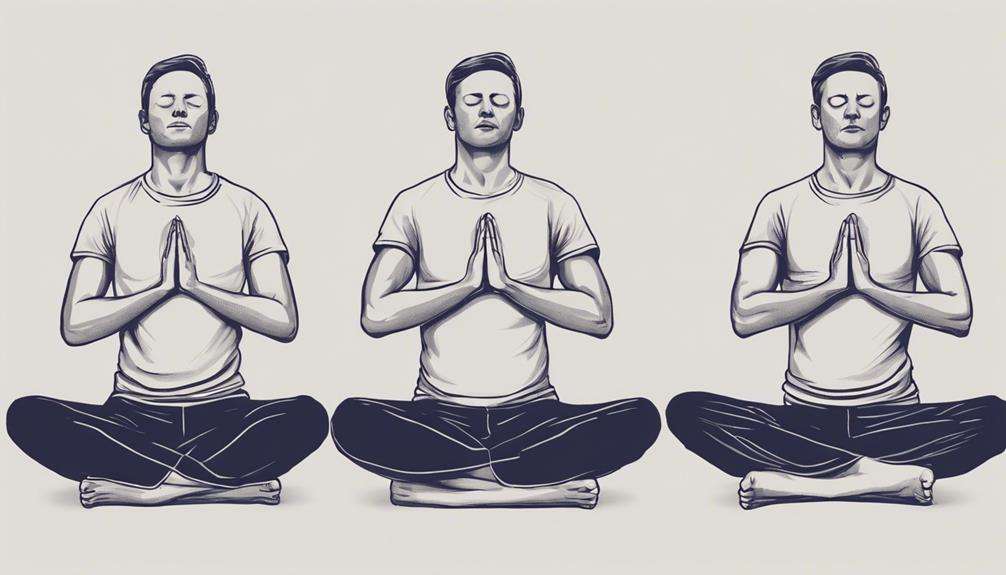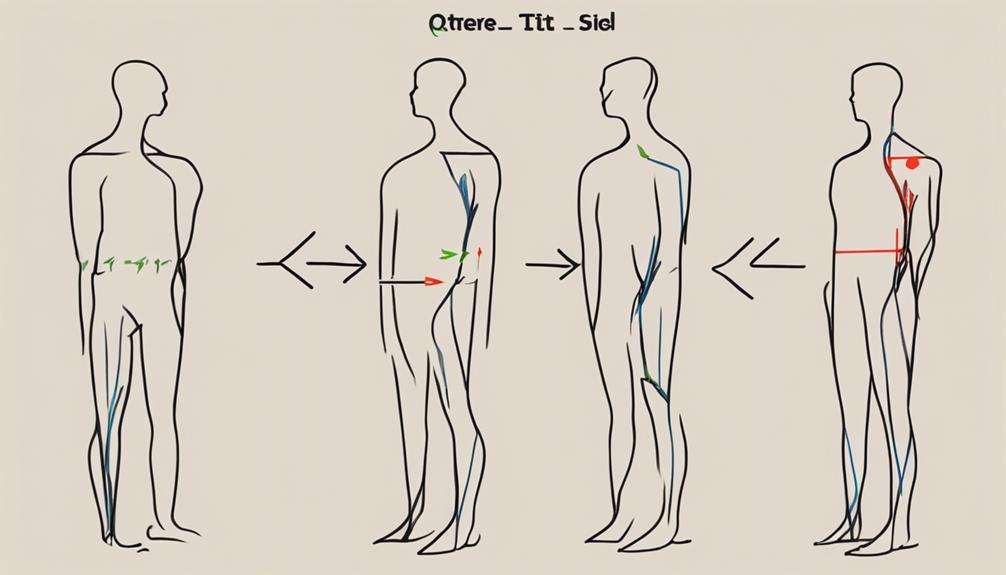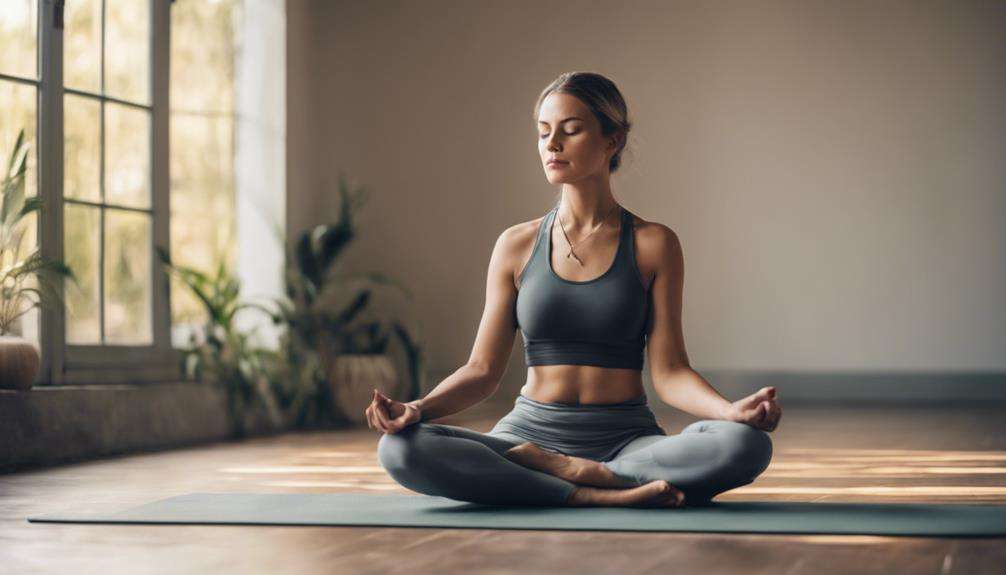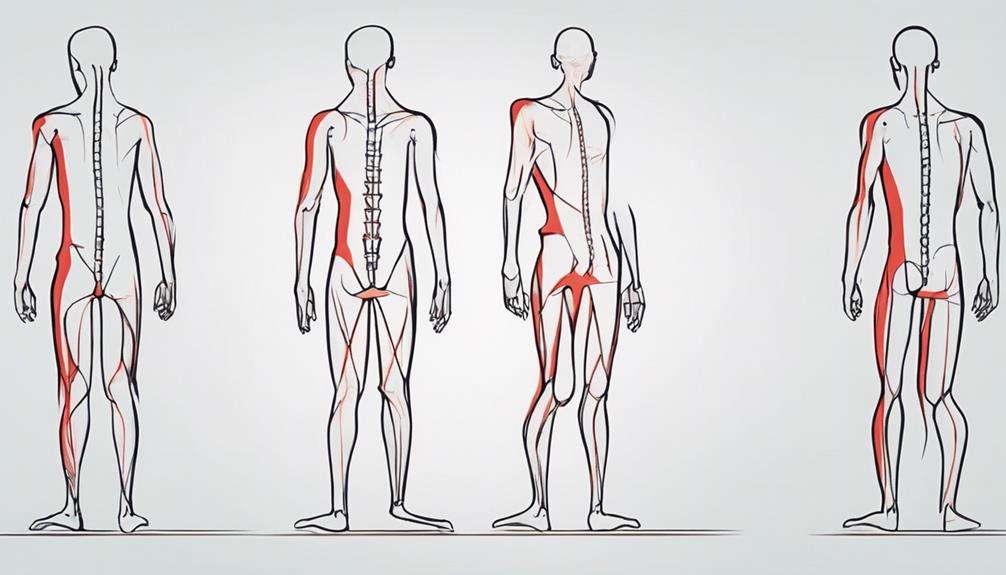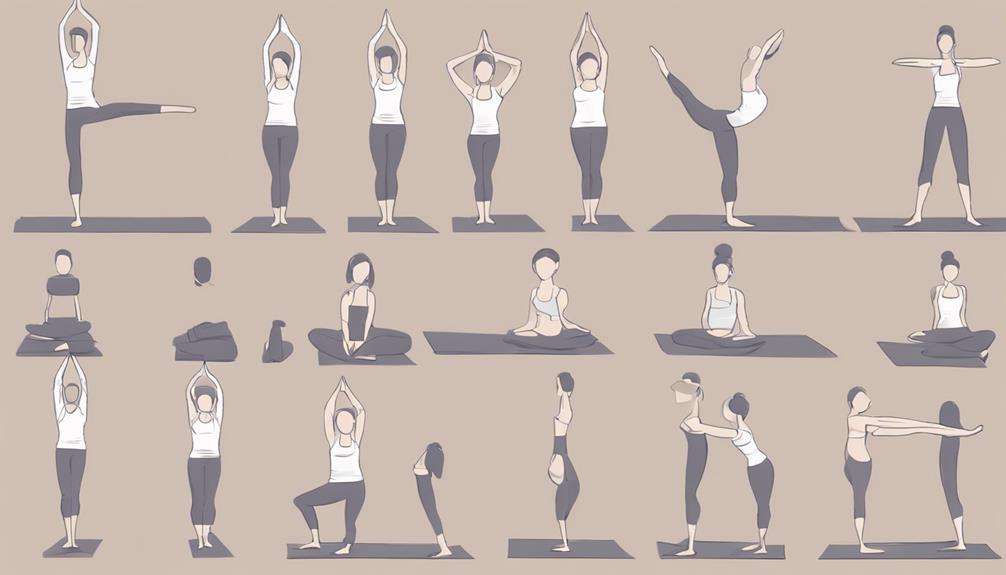When you step onto your yoga mat, you may not realize the profound impact it can have on your posture. The way yoga encourages you to move, breathe, and hold poses can gradually transform the way you carry yourself throughout the day.
It's not just about standing up straight; there's a deeper connection between the physical and mental aspects of posture that yoga helps you explore. So, next time you roll out your mat, consider how each pose is working to align not just your body but also your mind and spirit.
Key Takeaways
- Yoga strengthens core muscles for stability and prevents slouching.
- Enhanced flexibility supports proper spine alignment in yoga practice.
- Breathing techniques in yoga optimize posture and enhance body awareness.
- Props and alignment corrections in yoga prevent strain and improve posture alignment.
Core Strengthening Benefits
Engaging in core strengthening exercises through yoga plays a pivotal role in enhancing posture alignment by providing essential support to the spine and maintaining proper body positioning. Yoga's emphasis on strengthening the core muscles directly impacts spine alignment, thus influencing your overall posture habits. By targeting the core muscles, yoga helps prevent slouching and rounding of the back, leading to improved posture habits over time. Poses like Boat pose and Plank pose are particularly effective in building core strength, enhancing stability, and promoting better alignment throughout the body.
Furthermore, the core muscles not only provide support for the spine but also help reduce the risk of developing postural issues. A strong core acts as a solid foundation, allowing the rest of the body to align correctly and maintain proper posture. Through consistent practice of core-strengthening yoga poses, you develop a strong and supportive center that positively impacts your overall posture alignment.
Enhanced Flexibility Through Yoga
By practicing yoga, you can enhance your flexibility greatly.
Yoga helps lengthen and stretch your muscles, tendons, and ligaments, improving your range of motion and promoting better posture alignment.
This increased flexibility gained through yoga aids in reducing stiffness and tension, supporting proper spine alignment and overall posture improvement.
Yoga and Flexibility
Enhanced flexibility achieved through regular yoga practice enables increased range of motion in joints, leading to overall physical wellbeing. Yoga helps improve posture alignment by lengthening and stretching muscles, which in turn supports better spinal alignment.
By promoting flexibility in both muscles and connective tissues, yoga aids in preventing injuries and muscle imbalances. The range of motion gained through yoga not only enhances physical performance but also contributes to increased body awareness.
This heightened flexibility plays a vital role in maintaining proper posture alignment, which is essential for overall health and wellbeing. Embracing yoga as a regular practice can greatly enhance your flexibility, leading to a more aligned and balanced body.
Stretching Benefits
Stretching in yoga plays a key role in enhancing flexibility, which is essential for improving posture alignment and overall body mobility. By engaging in stretching poses, you lengthen muscles and connective tissues, leading to increased flexibility. This improved flexibility allows for a better range of motion, aiding in the alignment of the spine and joints.
Moreover, the focus on stretching in yoga helps release tension and tightness in muscles, contributing to the development of better posture habits. Regular practice of yoga poses aimed at enhancing flexibility can also prevent stiffness and restrictions that may otherwise result in poor posture.
Embracing stretching benefits through yoga can have a profound impact on your posture alignment and overall physical well-being.
Alignment Corrections in Yoga Practice
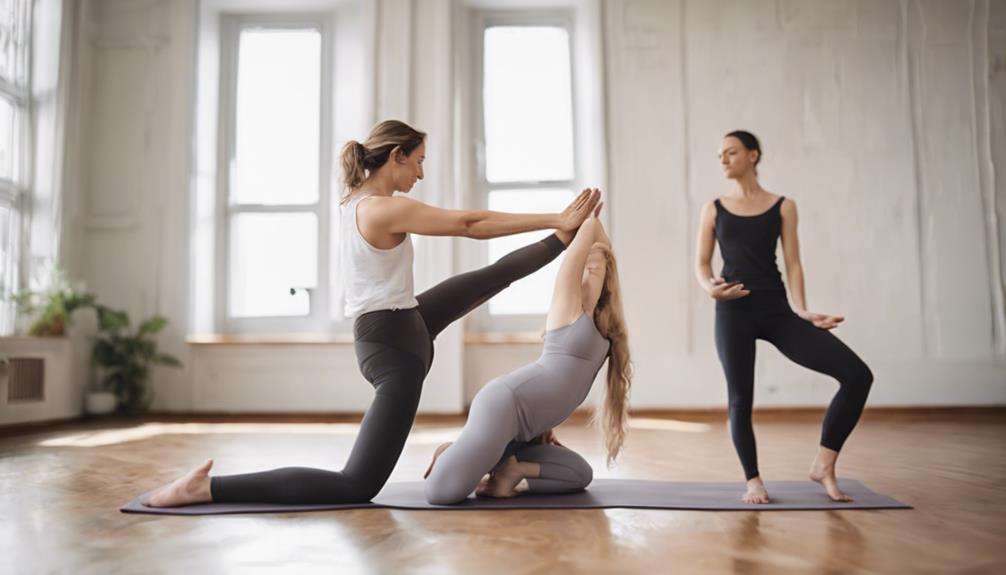
Incorporating alignment corrections in yoga practice guarantees proper positioning of the body in each pose, reducing strain on joints and muscles while promoting body awareness and correcting postural imbalances. By focusing on body alignment, yoga helps support spinal health and overall well-being.
Alignment corrections play a critical role in preventing injuries and ensuring that the body is in the best position for each posture. Mindful movement is encouraged in yoga to enhance the connection between breath and movement, leading to improved posture and a deeper mind-body awareness.
When practicing yoga, instructors often provide alignment cues to help practitioners adjust their positioning. These corrections can involve aligning the feet, hips, shoulders, and head correctly to maintain a stable foundation. Proper alignment not only prevents unnecessary stress on the joints but also allows for a more effective and beneficial practice.
Additionally, by incorporating alignment corrections into your yoga routine, you can cultivate a better understanding of your body's mechanics and improve your overall posture and alignment.
Relationship Between Posture and Breathing
When you maintain proper posture alignment in yoga, you optimize your breathing patterns for efficient oxygen intake and enhanced lung capacity.
Engaging in deep diaphragmatic breathing, a cornerstone of yoga practice, helps strengthen core muscles important for sustaining good posture.
The conscious breathing techniques in yoga not only relieve tension in the chest and upper back but also contribute greatly to improving overall posture alignment.
Breath Control and Posture
Proper breathing techniques in yoga play an important role in engaging core muscles, supporting improved posture alignment. When you focus on breath control during yoga practice, you enhance your body awareness, enabling you to make subtle adjustments for better posture alignment.
Deep breathing techniques encourage the expansion of your chest and the lengthening of your spine, helping you maintain a tall and upright posture throughout your practice. By consciously controlling your breath, you can promote relaxation, reducing muscle tension that may hinder proper alignment.
This relationship between breath control and posture alignment forms a strong foundation for your overall postural health and well-being, allowing you to experience the benefits of improved alignment and enhanced physical comfort in your daily life.
Diaphragm Engagement Importance
Engaging the diaphragm in yoga practice is essential for promoting better posture alignment and supporting the spine and core muscles. The diaphragm, as the primary muscle of respiration, plays an important role in maintaining good posture by stabilizing the ribcage and facilitating proper alignment of the body.
When the diaphragm is actively engaged during breathing exercises, it helps in elongating the spine, which contributes to postural correction. This engagement supports the spine's natural curvature and assists in maintaining a strong and stable core, which is essential for overall body alignment.
Alignment Impact on Breathing
Enhancing alignment in yoga practice positively impacts breathing efficiency and respiratory function by optimizing posture. Proper posture alignment in yoga, achieved through specific yoga poses, plays a critical role in enhancing breathing patterns.
By aligning the spine and opening up the chest and rib cage, yoga helps in expanding lung capacity and allowing for deeper breaths. Misaligned posture, on the other hand, can restrict the ability of the diaphragm to move freely, affecting the breath cycle.
Yoga poses that emphasize alignment not only help in expanding the lungs fully but also alleviate tension in the chest and shoulders, promoting easier and more natural breathing. This relationship underscores the significance of maintaining proper alignment for improved breathing and overall well-being.
Impact of Posture on Circulation
Posture greatly impacts circulation by influencing the smooth flow of blood throughout your body. Improving your posture through proper alignment helps to improve circulation, as it prevents compression of blood vessels that can hinder the free flow of blood. Specific yoga practices focus on enhancing posture awareness, which in turn supports healthy circulation by ensuring that pathways for blood flow remain unobstructed.
When you slouch or hunch, you risk restricting blood flow, potentially leading to issues such as numbness and poor circulation. By maintaining correct posture, you can help prevent problems like varicose veins and facilitate the efficient circulation of oxygen and essential nutrients throughout your body. Yoga, with its emphasis on postural integrity, can aid in sustaining best circulation by promoting good posture habits that support overall vascular health.
Digestive System Benefits From Good Posture
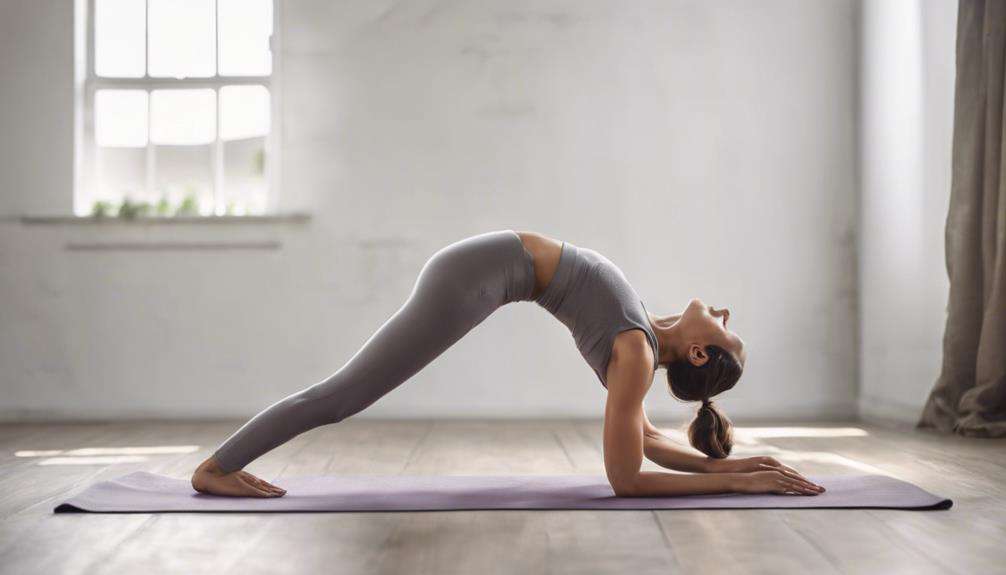
Efficient digestion relies on maintaining good posture to support the proper alignment of internal organs within your digestive system. When you improve your posture, you help in opening the chest and maintaining good alignment, which can positively impact your digestive health.
Slouching or having poor posture can compress the digestive organs, potentially leading to issues such as indigestion and bloating. By keeping a straight spine and open chest, as often encouraged in yoga poses, you can facilitate better digestion and enhance nutrient absorption.
Additionally, good posture can aid in preventing conditions like acid reflux by allowing the digestive system to function more efficiently. Yoga, with its focus on posture alignment, offers a holistic approach to alleviate discomfort and promote healthier digestion overall.
Posture's Influence on Mood
Maintaining proper posture, particularly through yoga practice, can have a significant positive impact on your mood by reducing stress and enhancing self-confidence. When you maintain good posture alignment in yoga, you not only relieve back pain but also open up your chest and diaphragm, facilitating deep breathing that can improve your mood. By practicing yoga poses that focus on posture alignment, you increase flexibility and release tension in your body, leading to a more relaxed and calm state of mind.
Moreover, improved posture encourages a more open and expansive body language, which can boost feelings of positivity and empowerment. As you become more mindful of your posture during yoga practice, you cultivate a sense of presence and mindfulness that promotes a more positive and balanced mood. The combination of physical alignment and mental awareness in yoga can help you experience a greater sense of well-being and uplift your overall mood.
Yoga's Focus on Body Awareness
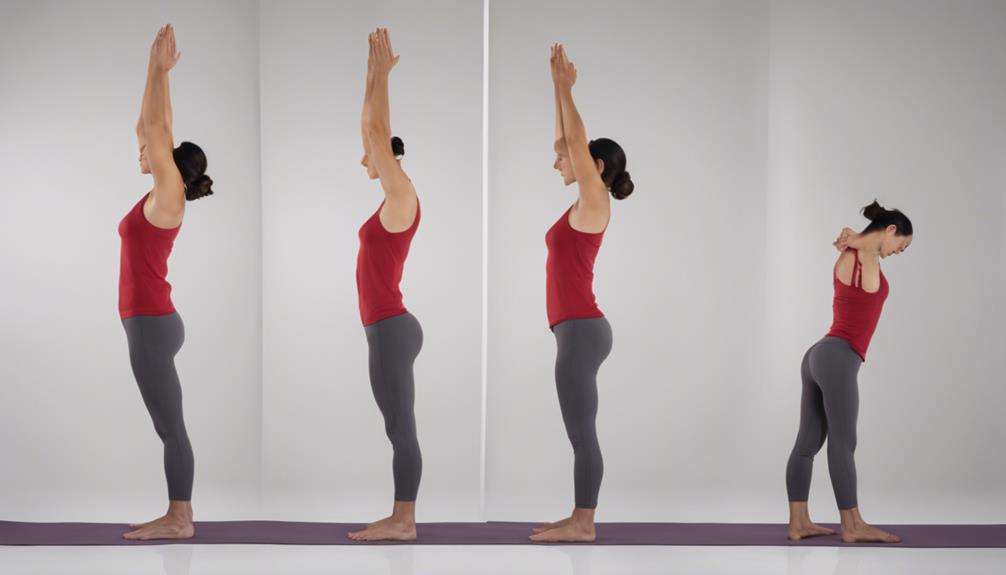
Enhancing body awareness is a fundamental focus of yoga practice, achieved through mindful movement and breath control techniques. When practicing yoga, individuals are encouraged to pay close attention to their body's alignment and positioning in various poses like the tree pose and plank pose. By incorporating breathing techniques, practitioners deepen their awareness of how their body moves and reacts in each posture, fostering a mindful connection between the body and mind.
This heightened awareness allows individuals to recognize and address any postural imbalances or alignment issues they may have. Additionally, using props such as yoga blocks can help support proper alignment and enhance body awareness during practice. Through this mindful approach, yoga not only aids in improving posture but also in developing healthy postural habits that prevent issues related to poor posture.
Yoga's emphasis on body awareness plays an essential role in promoting better posture alignment and overall well-being.
Utilizing Yoga Props for Alignment
Yoga practitioners benefit greatly from incorporating various props like blocks, straps, and bolsters to support and maintain proper alignment during poses. Utilizing yoga props is essential for improving body alignment by providing the necessary assistance and support to achieve correct postures. These props play a significant role in enhancing body awareness and preventing strain on joints and muscles, ultimately promoting safe alignment practices. By using props, individuals can modify poses according to their unique needs, ensuring ideal alignment and posture in each pose.
The incorporation of yoga props into practice not only helps in maintaining proper alignment but also facilitates a deeper understanding of one's body positioning. Props aid in adjusting poses to fit individual anatomical differences, allowing for a more comfortable and aligned practice. Over time, consistent use of props leads to improved posture as they encourage the body to find its natural alignment and balance. Yoga props serve as valuable tools in refining alignment, supporting the body, and promoting overall well-being through proper posture practices.
Frequently Asked Questions
Why Does Yoga Improve Posture?
Flexibility benefits from yoga improve posture by lengthening tight muscles. Muscle strength around the spine and shoulders supports proper alignment. Mind-body connection in yoga enhances body awareness, aiding in recognizing and correcting postural imbalances.
In What Ways Can Yoga Help Improve Posture and Promote Better Body Alignment?
Improving posture and alignment through yoga involves engaging core strength, enhancing flexibility, and fostering a strong mind-body connection. By focusing on balance, muscle awareness, breath control, and back support, you can achieve better spinal health.
Why Is Alignment so Important in Yoga?
Alignment in yoga is essential for preventing injuries, maximizing benefits like improved posture, and promoting body awareness. Mindfulness in correcting techniques enhances stability, balance, and energy flow. Consistency in alignment techniques yields numerous benefits for your practice.
How Long Does It Take to Fix Posture With Yoga?
You can see notable changes in posture progress with consistent yoga practice. Improvement rates vary, but many notice alignment adjustments after 4-6 weeks. Developing body awareness through yoga can lead to a transformation in posture within months.
Conclusion
Just as a sturdy tree with deep roots stands tall and strong in the face of storms, practicing yoga can help you build a solid foundation for better posture alignment.
By engaging core muscles, improving flexibility, and correcting alignment issues, yoga acts as a guiding light to keep your body in balance and harmony.
Embrace the power of yoga to cultivate good posture habits and stand tall like a resilient tree in the forest of life.
